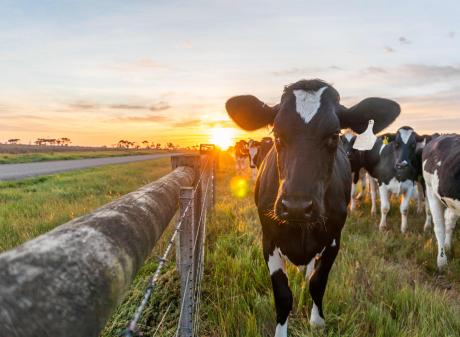
AgResearch scientist Jamie Ward is on the committee organising a celebration of 50 years of deer farming science at Invermay Agricultural Centre on Monday, September 26.
"I’m the one who did the math and figured out it all happened 50 years ago."
In 1972, scientist Ken Drew and veterinarian Les Porter launched a deer farming research programme at Invermay.
The quality physiological science of those early years was still being used by scientists today, Mr Ward said.
Invermay was the first research institute to get Government funding for a deer farming science programme in New Zealand.
The first licence to farm deer in New Zealand was issued in 1969.
In 1973, Herbie Taylor, of West Dome Station, near Mossburn, "loaned" 92 red deer to Invermay to start a "research herd" for the programme.
"I don’t know if any money ever changed hands."
More southern farmers followed suit, "gifting or loaning" deer to the programme.
"There wasn’t a heck of a lot of formality behind it, it was just trust and action and it was amazing how much action there was in those early years."
The industry had always been behind the programme, he said.
"Right from the start there’s been that recognition science has delivered for the industry."
A strong connection between the industry and the programme had helped ensure the Government funding for deer science continued.
If funding was pulled, he believed farmers in the "bullish and passionate industry" would have been "banging on ministers’ desks".

The invitation list for the event includes more than 100 former staff and anyone associated with the deer industry, such as Dunedin business Millers Mechanical, which helped set up the research abattoir, the Deer Slaughter Plant at Invermay.
In the abattoir, a new way to remove a deer hide was developed - the inverted dressing system.
"It was a game-changer for the industry."
Traditionally, a deer was hung by its back legs, so when the hide was removed, it pulled the "dirty end" across the carcass, which could spoil the meat.
For the inverted dressing system, the deer was suspended by its four legs and the hide removal began from its shoulders, greatly improving carcass bacteriological quality.
"That method was developed here with Millers Mechanical."
The method was now an industry standard.
"The abattoir was a big part of the science for a long time."

"Duncans have been extraordinarily accommodating over the years - it’s been a brilliant relationship."
Many of those who were part of the programme in its early days would be at the celebration including Dr Drew, who is now aged in his mid 80s.
Speakers at the event include Dr Drew and former farm manager Adam Whaanga.
A farm tour on the day would show some of the more than 1000 deer - a mix of red deer and wapiti - across more than 170ha.
Some staff who had been "out of the game for a while" might be surprised how much bigger the deer were now.
Spring was a great time for the celebration because stags were growing velvet and the rising yearlings were in good condition.
One of the displays on the day will be some antlers produced from stem cells by scientists Chunyi Li, Stephen Haines and Jimmy Suttie in the 2000s.
"We know a whole lot about stem cells now - we know anything can be differentiated into a stem cell - but in that point in time, we didn’t know that and the first place it was ever proven was by Chunyi, who did it with antlers."

When word circulated about the possibility of the anesthetic used during the velvetting process might remain as a residue in the antler, it sparked a "mad scramble" for programme scientists in 2003.
The scientists proved a correctly-applied tourniquet cut the bloodflow to the antler and no anesthetic remained in the antlers.
Science solved the market issue, he said.
The programme had the resources, skills and knowledge to mobilise quickly and use science to support an industry "out of a potentially very large hole".
Deer Industry New Zealand chief executive Innes Moffat said the industry had a strong relationship with the programme scientists.
"They have played a large part in developing the modern, sophisticated deer farming industry in New Zealand."
The "pioneer" scientists developed methods for farming deer and the ongoing work in the programme helped the industry meet future challenges.
"We haven’t run out of challenges."
shawn.mcavinue@alliedpress.co.nz














